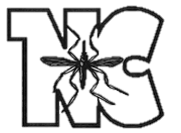While the spread of Zika virus is of great concern, it is unlikely that the pathogen will find a home in the NCMCA’s region. This is due largely to the species of mosquito that are the most likely culprit of transmitting the disease. So far, scientific research points to Aedes egypti and Aedes albopictus as the primary species capable and most likely to spread Zika virus in South America and the Gulf region of the United States. Neither of these species are particularly well suited to survive the cold and snow of the Great Plains. Additionally the virus appears to require air temperatures most commonly associated with tropical climates and conditions.
However the lessons of Zika are still very useful: DUMP AND DRAIN! Often humans are the cause of producing of habitat for breeding mosquitoes around our homes. Generally speaking items like: containers, poorly maintained water gardens, tarps, rain collection barrels and other manmade items are making ideal habitat for mosquitoes capable of transmitting disease.
Additionally, travelers should take special notice. If you or a loved one is planning to visit areas with active transmission of mosquito borne illnesses; repelling mosquitoes should be part of your travel planning. In some cases simply checking a website or adding a can of DEET containing repellent to your baggage might be sufficient.
As the body of scientific evidence of Zika grows, these recommendations will likely change. However there is no need for panic. If you are concerned or have specific questions, speak to your health care provider or call a mosquito control specialist who can recommend precautionary steps you and your family might consider.
